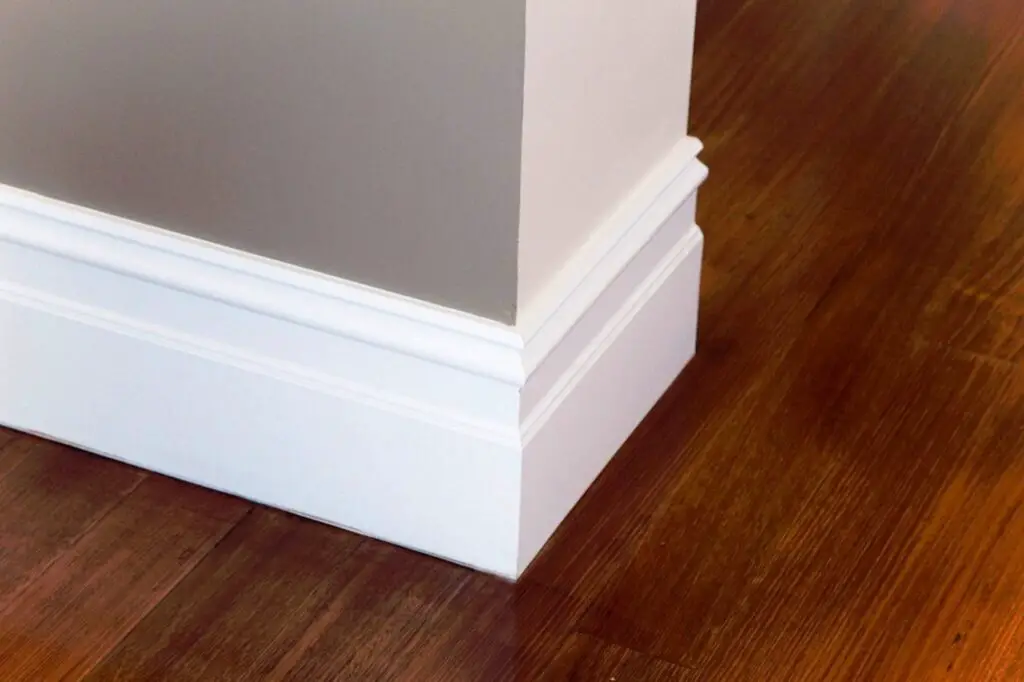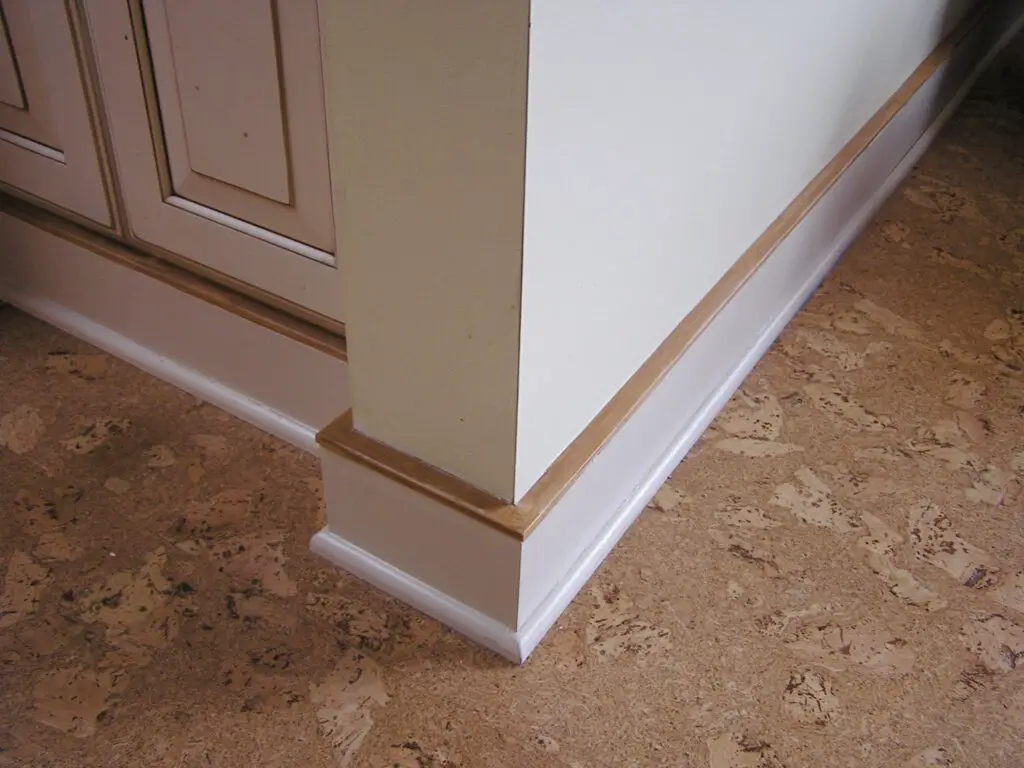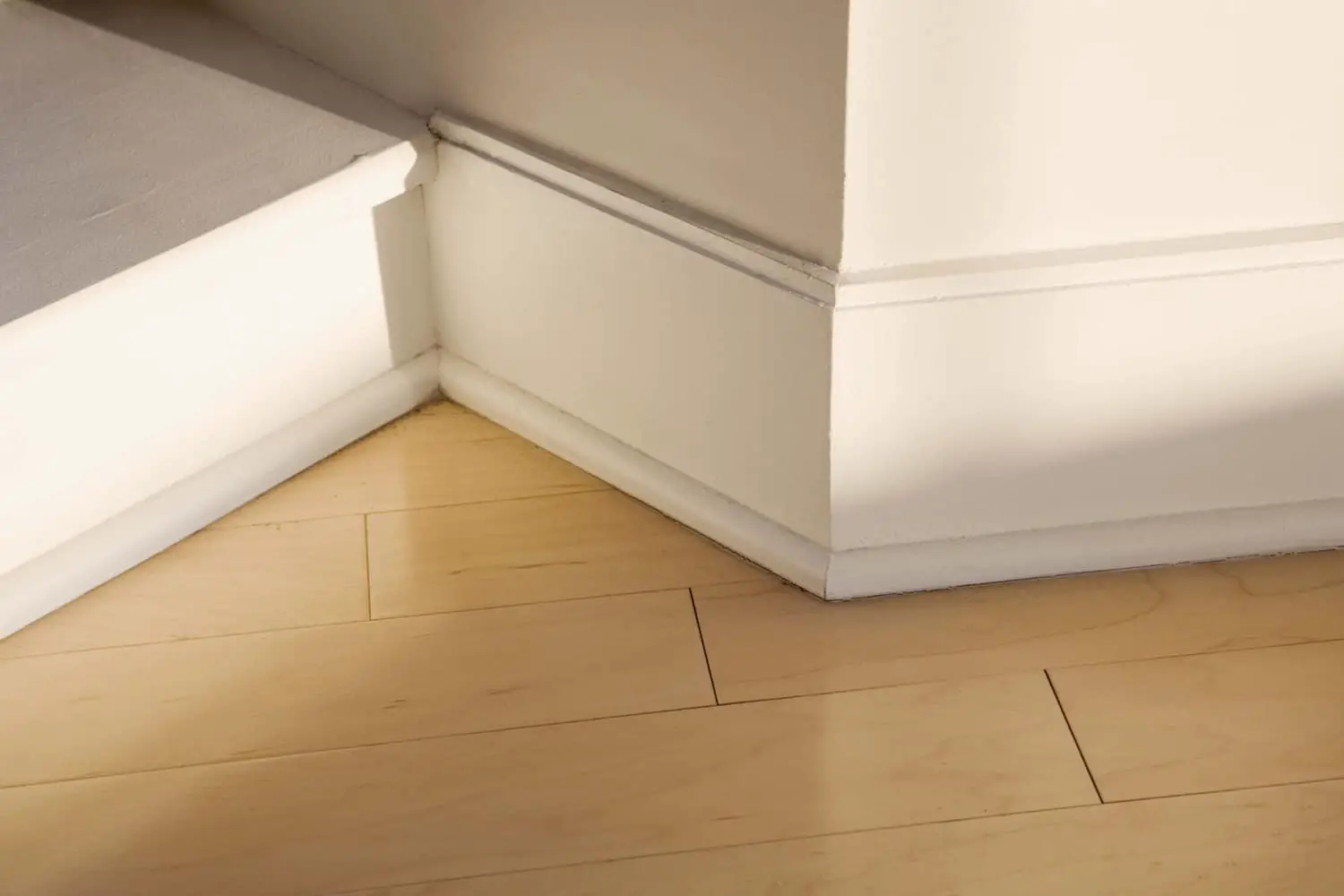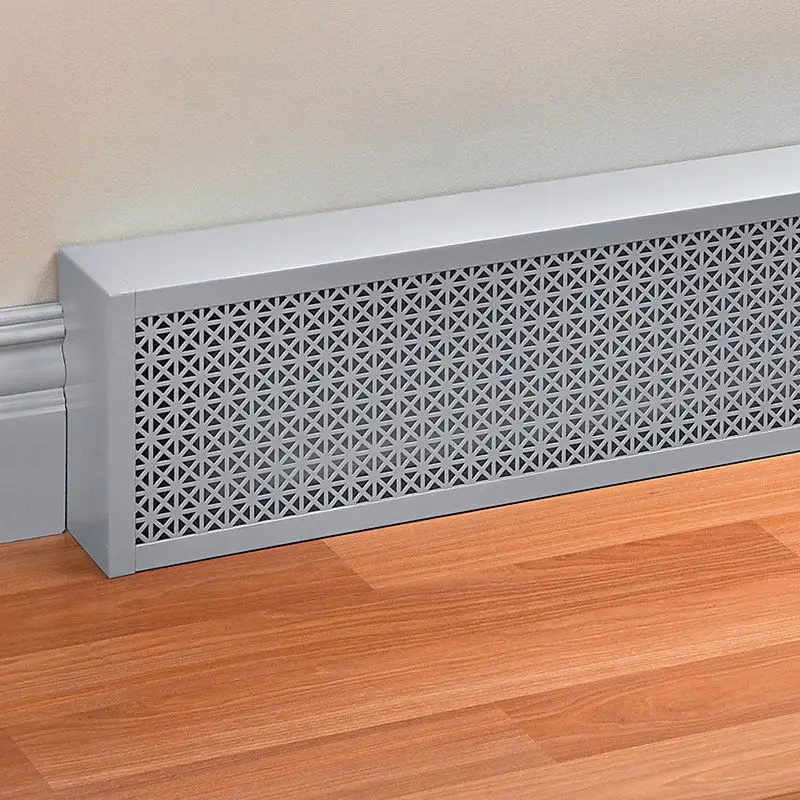What Is Baseboard Molding
Introduction
What Is Baseboard Molding: Baseboard molding serves both a functional and aesthetic purpose. On a functional level, it helps to protect the wall from damage caused by furniture, vacuum cleaners, and other objects that may come into contact with it. It also helps to hide any imperfections or gaps that may exist between the wall and the floor. From an aesthetic standpoint, baseboard molding adds visual interest and depth to a room, enhancing its overall appearance and creating a more polished and finished look.
There are several different types of baseboard molding available, each with its own unique characteristics and design elements. Some common styles include plain baseboard molding, which is a simple and understated option, and ornate baseboard molding, which features intricate details and decorative elements. Additionally, there are options such as beaded baseboard molding, which has a series of small beads along its surface, and sculpted baseboard molding, which has a three-dimensional design.
When choosing baseboard molding, it is important to consider the overall style and design of the room. For example, if the space has a more traditional or classic look, ornate baseboard molding may be the best choice. On the other hand, if the room has a more modern or minimalist design, a plain or beaded baseboard molding may be more appropriate. Additionally, the height and width of the baseboard molding should be taken into consideration, Sand Baseboard as this can have a significant impact on the overall look and feel of the space.

What is baseboard used for?
Its purpose is to cover the joint between the wall surface and the floor. Baseboard is a type of trim that is commonly used in homes and buildings. It is a long, narrow board that is installed at the bottom of walls, where the wall meets the floor.
One of the main functions of baseboard is to protect the wall from damage. Without baseboard, the bottom of the wall is vulnerable to scuffs, scratches, and other types of wear and tear. Baseboard acts as a barrier, preventing furniture, vacuum cleaners, and other objects from coming into direct contact with the wall. This helps to maintain the integrity and appearance of the wall over time.
In addition to its protective function, baseboard also plays a role in enhancing the visual appeal of a room. Baseboard can be made from a range of materials, including wood, MDF (medium-density fiberboard), and PVC (polyvinyl chloride). Each material has its own advantages and considerations. Wood baseboard, for example, is a popular choice for its natural beauty and durability. MDF baseboard is often chosen for its affordability and ease of installation.
Baseboard is a versatile and essential element in interior design. It serves both a practical and decorative purpose, protecting walls from damage and adding a finishing touch to a room. With a wide range of materials and styles available, baseboard can be customized to suit any design aesthetic and budget.
What is the difference between baseboard and casing?
The casing is the decorative trim, or molding, that gets installed around your interior doors and windows. The baseboard is the molding that follows the base of the wall along the floor line.
Baseboard and casing are two common terms used in the construction and interior design industry. Baseboard refers to the trim that is installed at the bottom of a wall, where it meets the floor. It is typically a long, narrow board that runs along the perimeter of a room. It also helps to hide any gaps or imperfections between the wall and the floor. Casing, on the other hand, refers to the trim that is installed around doors and windows. Casing can also help to insulate the space around doors and windows, preventing drafts and improving energy efficiency. Like baseboard, casing can be made from various materials and comes in different styles and sizes.
While both baseboard and casing serve a functional purpose, they also contribute to the overall aesthetic of a room. The style and design of baseboard and casing can vary greatly, from simple and understated to ornate and decorative. Baseboard and casing are two types of trim used in construction and interior design. Both baseboard and casing come in various styles and materials to suit different design preferences.
What’s the difference between baseboard and trim?
Baseboard is the trim that defines where the floor ends and the wall begins. It also protects your wall material from the wear and tear of mops and vacuum cleaners. Baseboard is usually thinner than door trim, which is called casing, and at least one-third wider.
Baseboard and trim are both important elements in interior design and can greatly enhance the overall look of a room. While they are often used interchangeably, there are some key differences between the two.
Baseboard refers to the molding that is installed at the bottom of a wall, where it meets the floor. It serves both a functional and aesthetic purpose.
Baseboard is typically made of wood or a composite material and comes in a variety of styles and sizes. It can be simple and understated or more ornate, depending on the desired look. Baseboard is usually installed by nailing it to the wall, and it can be painted or stained to match the rest of the room’s decor.
What is baseboard molding made of?
Baseboard molding can be made from a number of different materials, each of which has its own benefits and qualities. Wood is one of the most popular things used to make baseboard molding. People like wood borders because they look nice and can be used in many ways. They can be made from pine, oak, maple, and other types of wood, and they can be stained or painted to fit the style of the room.
Medium-density fiberboard (MDF) is another favorite choice for baseboard molding. MDF is a man-made wood product that is made from glue and wood fibers. Because it is durable and cheap, a lot of people choose it for their borders. It’s easy to paint MDF baseboards so that the result is smooth and even.
Baseboard molding can be made from more than just wood and MDF. It can also be made from PVC and polyurethane. PVC baseboards are great for bathrooms and kitchens because they don’t get damaged by water and are easy to clean. Polyurethane baseboards are light and don’t break easily, so they’re a good choice for places where the temperature or humidity changes a lot.
What to use for baseboard molding?
Medium density fiberboard (MDF) is a popular choice for borders, molding, and trim because it is cheap and easy to work with. Pressure treatment and wood fibers are mixed together to make MDF, which is a manufactured wood product. These baseboards don’t have a natural wood grain, so they don’t take stains well.
Wood is a common choice for baseboard molding. People have loved wood baseboards for a long time, and they can add a bit of class to any room. You can paint or stain wood baseboards to match your current style, which makes them a flexible choice.
Vinyl borders are also simple to clean and care for; all you need is a damp cloth.
When picking the material for your baseboard molding, you should think about how long it will last, how it will look, and how much you can spend. Wood baseboards look classic, but they may need to be maintained regularly. Vinyl baseboards, on the other hand, are cheap and easy to clean. MDF baseboards are strong and last a long time, which makes them perfect for places where the temperature changes often. In the end, the material you choose will rely on your personal tastes and the needs of your room.
Baseboard trim is useful and nice to look at in the same room. The purpose of it is to cover the gap between the wall and the floor and keep furniture, vacuum cleaners, and other things that might touch the wall from damaging it. It also helps hide any flaws or holes that might be there between the floor and the wall.
How is baseboard molding installed?
The installation process for baseboard molding typically involves a few steps. First, the walls should be measured to determine the length of molding needed. The molding can then be cut to size using a miter saw or a coping saw for more intricate cuts. Before attaching the molding to the wall, it is important to ensure that the surface is clean and free of any debris.
What are the different types of baseboard molding available?
There are several different types of baseboard molding available, each with its own unique style and profile. Baseboard molding is installed to provide a finished look to the bottom of walls and to protect the wall from damage. It also helps to cover any gaps or imperfections between the wall and the floor. The purpose of baseboard molding is to add a decorative element to a room and to create a smooth transition between the wall and the floor.
To install baseboard molding, you will need to measure and cut the molding to the desired length. Then, using a miter saw, you will need to cut the corners at a 45-degree angle to create a seamless joint. Next, you will need to apply adhesive to the back of the molding and press it firmly against the wall. Finally, you will need to secure the molding in place with finishing nails or a nail gun.
Overall, baseboard molding installation requires careful measurement, precise cutting, and proper installation techniques. It is important to ensure that the molding is level and securely attached to the wall. By following these steps, you can achieve a professional-looking installation that enhances the overall appearance of your room.
What are the different types of baseboard molding available?
Baseboard molding is available in a variety of styles and materials, allowing homeowners to choose the perfect option to complement their interior design. One popular type of baseboard molding is the traditional wood molding. This type of molding is typically made from solid wood, such as pine or oak, and offers a classic and timeless look. Wood baseboard molding can be stained or painted to match the color scheme of the room, making it a versatile choice.
Another option is composite baseboard molding, which is made from a combination of wood fibers and resin. This type of molding is more resistant to moisture and warping, making it a great choice for areas prone to humidity, such as bathrooms or basements. Composite baseboard molding is available in a variety of finishes and can be painted to match any decor.
Can baseboard molding be painted or stained?
Yes, baseboard molding can be painted or stained to match the desired aesthetic of a room. Painting baseboard molding is a popular choice as it allows for a wide range of color options and can easily be changed or updated in the future. Before painting, it is important to properly prepare the molding by cleaning it and sanding any rough areas. Applying a primer will help the paint adhere better and ensure a smooth finish. Once the primer is dry, multiple coats of paint can be applied, allowing each coat to dry completely before applying the next.
Staining baseboard molding is another option that can add a touch of elegance and highlight the natural beauty of the wood. Before staining, it is important to remove any existing finish or paint from the molding. This can be done by sanding or using a chemical stripper. Once the molding is bare, the stain can be applied using a brush or cloth, following the grain of the wood. It is recommended to apply multiple coats of stain, allowing each coat to dry before applying the next. To protect the stained molding and enhance its appearance, a clear topcoat can be applied.
How does baseboard molding enhance the overall appearance of a room?
Baseboard molding plays a crucial role in enhancing the overall appearance of a room. It not only adds a finishing touch to the walls and floors but also helps to create a cohesive and polished look. By covering the joint between the wall and the floor, baseboard molding provides a seamless transition and hides any imperfections or gaps that may exist. This creates a clean and professional finish that instantly elevates the aesthetic appeal of the room.
In addition to its functional benefits, baseboard molding also adds architectural interest and character to a space. It can be used to create visual interest and define the style of the room. Whether you prefer a traditional, ornate design or a modern, minimalist look, there are various types of baseboard molding available to suit your taste and complement the overall design scheme.
Baseboard molding can also help to visually balance the proportions of a room. By adding a horizontal element at the base of the walls, it creates a sense of grounding and stability. This is particularly important in rooms with high ceilings, as it helps to bring the focus down and create a more intimate and cozy atmosphere. Overall, baseboard molding is a versatile and essential element in interior design that can significantly enhance the overall appearance and appeal of any room.

Conclusion
Baseboard molding is a type of trim that is installed along the bottom of walls to cover the joint between the wall and the floor. It serves both a functional and aesthetic purpose, providing a finished look to a room while also protecting the wall from damage. Baseboard molding comes in a variety of styles and materials, allowing homeowners to choose the option that best suits their design preferences and budget.
One of the main benefits of baseboard molding is its ability to hide imperfections in the wall-floor joint. It covers any gaps or unevenness that may exist, creating a smooth transition between the two surfaces. This can be particularly useful in older homes or those with uneven floors, where the baseboard molding can help to create a more polished and cohesive look.
In addition to its functional benefits, baseboard molding also adds a decorative element to a room. It can help to define the style and character of a space, whether it be traditional, modern, or somewhere in between. The wide range of styles available, from simple and understated to ornate and detailed, allows homeowners to customize their baseboard molding to match their overall design aesthetic.
Baseboard molding can also be used to enhance the visual height of a room. By choosing taller baseboard molding, homeowners can create the illusion of higher ceilings, making a space feel more open and spacious. This can be particularly beneficial in rooms with low ceilings or in smaller spaces where every inch counts.








